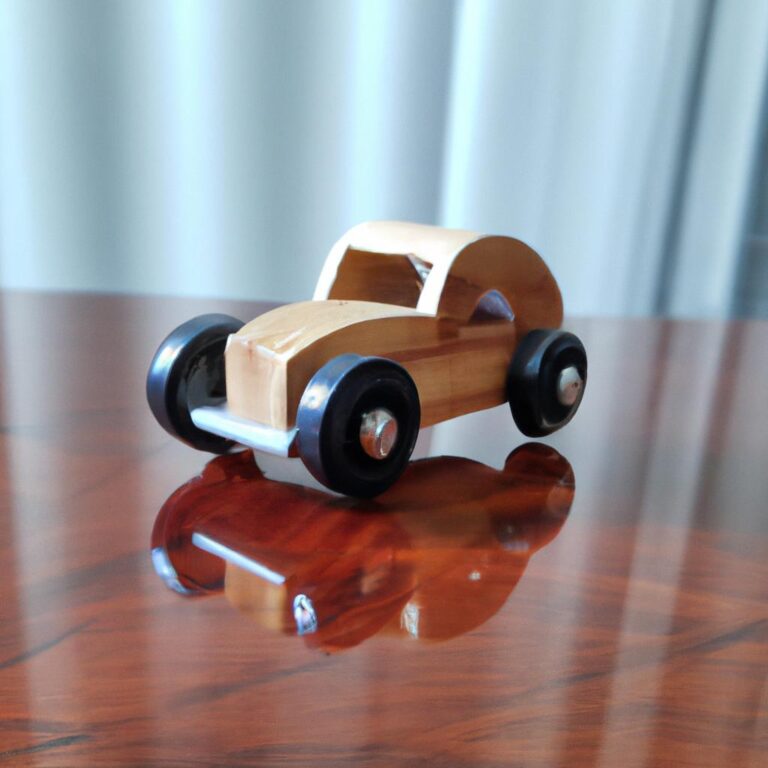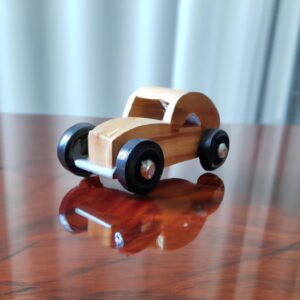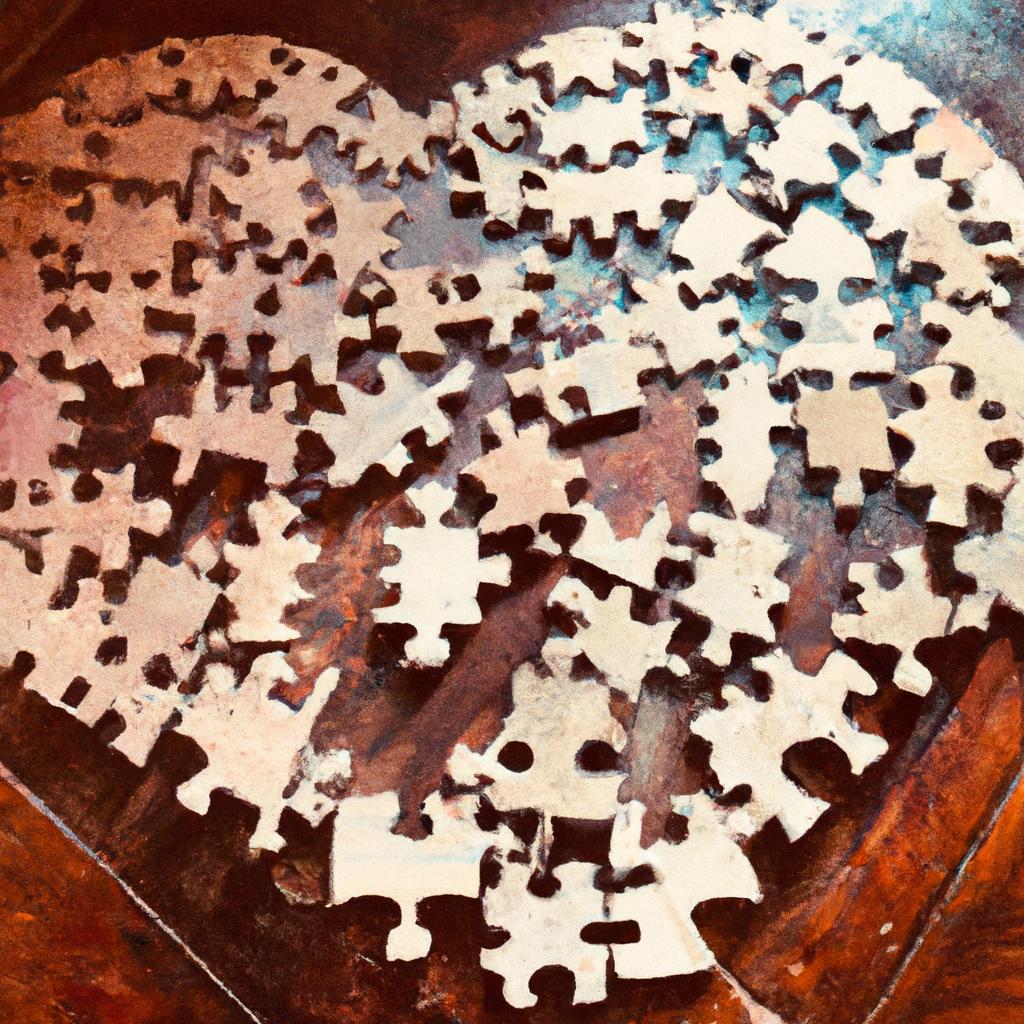Making toy cars and vehicles can be a fun and educational activity for people of all ages. Not only does it provide opportunities for creativity and artistic expression, but it can also serve as a great way to teach kids about engineering fundamentals. This guide will outline the basics of creating handmade toy cars and vehicles from cardboard as well as miniatures crafted from various materials. We’ll also provide important safety tips and suggestions for improving the quality of your creations. With the right tools and supplies, you’ll be able to make amazing toy cars and vehicles that you and your family will love!
Making Toy Cars & Vehicles From Cardboard
Making toy cars and vehicles from cardboard is an exciting activity that is fun for all ages. With a few simple supplies like cardboard, scissors, glue, and markers, you can create small cars, planes, boats, and more!
To start, choose an appropriate size of cardboard. You will need enough to make your vehicle. For a small car, you might use a piece of poster board or cereal box cardboard. For a larger vehicle, use a stronger cardboard such as corrugated cardboard. Mark the shape of the vehicle on the cardboard and cut it out using sharp scissors. For extra strength, you can glue two pieces together.
If you are making a car or truck, use a ruler to draw two parallel lines down the center of the cardboard. These will be the wheel wells. Then, measure and mark four small circles along the lines to represent the wheels. Cut out the circles and glue them onto the bottom of the car.
Decorate the vehicle with markers, stickers, construction paper, or other materials. You can even add headlights or windows using tissue paper or wax paper.
Once your vehicle is complete, you can play with it or display it proudly. Creating toy cars and vehicles from cardboard is a great way to have fun and express yourself!
Crafting Miniature Cars & Vehicles
Miniature toy cars and vehicles can be just as fun to make and play with as their larger cardboard counterparts. To create these tiny marvels, you can use all sorts of materials such as clay, wood, fabric, paper, and other items you may have around the house—allowing for plenty of creative possibilities.
Miniature vehicles are easy to make and require minimal supplies. Start by gathering a few common items, which may include things like glue, scissors, craft sticks, paints, markers, magnets, and beads. If you have access to a 3D printer, you can even design and print out your own tiny parts if need be.
Once you have the materials you need, it’s time to start crafting! Depending on which type of vehicle you’d like to make, you can make a simple car frame out of craft sticks that can be decorated with paint or markers, or you can sculpt a sculpture out of air-drying clay and attach wire pieces for steering and wheels. You can also use fabric or felt, paper, or cut up fruit leather to create unique detailing and accessories that bring your mini vehicles to life. Be creative and have fun with it!
Tips for Safety and Fun
When it comes to children, safety should always come first! Here are some tips to help ensure safety and fun when making toy cars and vehicles with kids.
- Always supervise children when constructing toy cars or vehicles.
- Ensure all materials are age-appropriate and non-toxic.
- Lay down a tarp or newspaper before starting the project to prevent messes.
- Keep sharp tools away from children.
- Explain how each step works in simple language that children can understand.
- Encourage children to be creative and use their imaginations.
- Help children to think through problems and suggest ways of overcoming obstacles.
- Be patient and supportive of efforts. Don’t forget to make it fun!
With just a few precautions and some guidance, making toy cars and vehicles can be an enriching and wonderful experience for children of all ages.
Learning Opportunities
Making toy cars and vehicles can be a fun way to teach kids science and engineering fundamentals. Through the process of designing, constructing, and playing with homemade toy cars, kids can learn valuable lessons about building and designing, as well as physics concepts such as force and motion. It also provides them with an opportunity to exercise their creativity and problem solving skills.
By crafting toy cars from recycled materials like cardboard, wood, fabric, and paper, kids can learn more about the natural world and gain an understanding of how everyday things are constructed. Other topics of discussion may include how different materials interact with each other, and how best to use them to build something.
Moreover, making toy cars and vehicles is a great opportunity for kids to learn something about their own history and culture, as handmade toys have been around for centuries in different forms. Exploring stories and mythology associated with these vehicles can also help kids develop a deeper appreciation for their heritage.
Supplies & Resources
Creating toy vehicles is a fun and educational activity for children of all ages. To get started, you’ll need to have the right supplies and resources.
Essential materials include cardboard, glue, scissors, tape, markers or pens, paper, and other materials depending on the type of vehicle you plan to make. Some great kits for getting started with toy vehicle making are available online or at craft stores.
You may also want to check out some websites, blogs, or books for inspiration or helpful tips. Be sure to research online safety guidelines when looking for resources on the internet.
Remember that the right tools and materials will make your project run smoother and also ensure that it is safe and enjoyable for everyone involved!
Customizing and Modifying Toy Cars & Vehicles
Toy cars and vehicles provide a great opportunity for getting creative. Whether it’s creating a custom paint job, adding some unique accessories, or making modifications to the design, there’s an endless list of things you can do to make your toy vehicle unique.
First, get out the paint brush. If you’re brave enough, try some intricate designs. Or just go for solid colors. It’s up to you! Then, it’s time for the accessories. Pick out some wheel caps for your car or some antennas for your plane. The possibilities are endless! Finally, make some modifications to your design. Try adding wings or extra seats to your car. Or add buzzers and blinking lights to make it look like a race car.
Let your imagination run wild and have fun with it! Whether you’re a beginner or an experienced builder, customizing and modifying your toy vehicle is a great way to express your creativity and explore new ideas.
DIY Science Experiments
Making toy cars and vehicles can also be a great way for kids to explore their creative side while discovering the joys of science. There are a number of fun and easy experiments you can do using toy cars and vehicles, right from the comfort of your own home.
For example, you can use toy cars to demonstrate the principles of force and motion by setting up a track or ramp and then testing which car can go the fastest when released simultaneously. Or, you can investigate momentum and energy by setting up an obstacle course and seeing which car can make it through quicker.
Another fun experiment is to see how far a car can travel if you spin it in a circular motion. This demonstrates centrifugal and centripetal forces. You can even vary the speed of the spin and observe the differences in car travel.
These are just a few ideas, but there are plenty more out there. With a bit of research you can come up with all sorts of fun and exciting science experiments for you and your kids to enjoy!
Stories and Mythology of Toy Cars and Vehicles
Toy cars and vehicles have been a source of fun for generations, and with them come to stories and mythologies. In some cultures, toy cars are symbols of luck, while in other cultures they help children to explore the world of make-believe. Throughout history, humans have invented stories and myths about toy cars and vehicles and used them as tools to learn and bond with each other.
One of the most well-known stories about toy cars is the famous “Tin Lizzy”. This story tells the tale of a boy who builds a small car from pieces of tin cans that he finds in a junkyard. With some magic and the help of an elf, Tin Lizzy comes to life! This story has inspired many movies, books, and toys.
Many cultures also believe toy cars have special powers. In some parts of Japan, it is believed that giving a child a toy car will bring them good luck. In Tunisia, people believe that toy cars can protect the family against bad spirits. And lastly, in Brazil, it is believed that driving a toy car around the house can ward off bad energy.
These stories and mythologies have been around for centuries and carry on today, inspiring creativity and sparking imaginations. Whether you’re making your own toy cars and vehicles from cardboard or miniatures, let these stories inspire and spark your creativity.
The Fun and Educational Benefits of Making Toy Cars & Vehicles
Making toy cars and vehicles is a fun and educational activity for all ages. From cardboard to miniatures, there are many different materials and techniques that can be used to create these fun toys. Not only do kids get to express their creativity, but they also learn important fundamentals in science and engineering.
Building toy cars and vehicles helps foster problem-solving skills by teaching kids to think analytically and logically. This activity also encourages hand-eye coordination and fine motor skills as children construct pieces and assemble them together. Additionally, making toy cars and vehicles teaches the value of finishing a project – something which will help children develop perseverance and a strong work ethic.
All of this makes it clear why creating toy cars and vehicles is an excellent activity for parents and caregivers to share with children. Through this activity, kids not only get to have some fun, but they also learn important life skills in the process.
Examples of Toy Car and Vehicle Projects
One of the best ways to illustrate what kind of toy cars and vehicles can be made with cardboard, miniatures, and other materials is to look at examples. Pictures, video clips, or even demonstrations by participants of the activity can show you just how creative you can be in designing toy cars and vehicles.
For instance, by using cardboard, you can construct a racecar with realistic tire details and a checkered flag design. With clay, you can make a tiny carousel with a rotating wheel and cute animal figures. Or with fabric and paper, you can make a whimsical hot air balloon with a trailing tail of colorful ribbons. The possibilities are endless!
As you explore your options, remember that the more effort you put into these projects, the better the result. So go ahead and get inspired by some of the creations of others before diving into your own project!
References
At the end of this guide, we’ve included a selection of references to help you understand how to make handmade toy cars and vehicles even better. The following websites, blogs, books, and other sources are full of helpful information that you may need or want to check out:
- How to Make a Toy Car – WikiHow
- How to Make a Cardboard Toy Car – Instructables
- Tutorial – Wooden Toy Car – Craft Gossip
- DIY Toy Car: Make Your Own for Fun – Innovate for Me
- Miniature Cars – Toy Making in the Home Workshop – Amazon
These references will give you everything you need for making great handmade toy cars and vehicles from cardboard or miniatures. With these resources in hand you will be able to show off your creations with pride!
comments: 0





